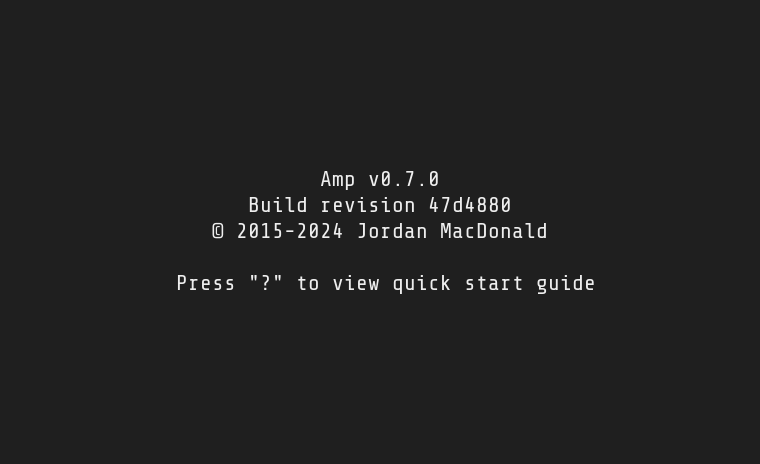Git hashes in Nix
While building Amp, I'm often making small, incremental changes in-between official releases. To dogfood these changes during my day-to-day work, I've added the project as a git-based input to my NixOS flake config, allowing me to easily pull those changes into my local installation.
Across various machines, it can be hard to tell which version I'm running. To fix that, I added a "build revision" to the splash screen, showing the shorthand commit hash of the current build:

Populating that during Nix-based builds ended up being tricker than I'd thought.